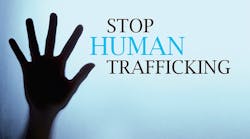Addressing human trafficking is difficult and requires myriad strategies. On January 26, the President’s Interagency Task Force to Monitor and Combat Human Trafficking met to discuss how the U.S. government will continue to build a stronger, more comprehensive federal anti-trafficking response and support the implementation of the National Action Plan to Combat Human Trafficking.
During that meeting, United States Trade Representative Katherine Tai announced that the Office of the United States Trade Representative (USTR) will develop its first-ever focused trade strategy to combat forced labor.
“Eradicating forced labor is not just a moral imperative, but an economic necessity. Doing so also helps protect workers from unfair competition and raises global labor standards,” Ambassador Tai said in a statement.
“In order to prevent this human exploitation, and protect the 25 million individuals – including women and children – forced to work against their will in harsh conditions, we need to come together as a global community and create collective action. I am committed to working with our trade partners to create a fair, rules-based international trading system where the use of forced labor in traded goods and services, including forced child labor, becomes a thing of the past.”
The development of this strategy will include a thorough, interagency review as well as an inclusive process that maximizes input from stakeholders, including labor organizations, civil society, survivors, and the private sector.
Explaining the role of trade in solving this program Tai said: "We know that we can achieve more durable and lasting change if our trading partners also commit to these principles and incorporate them into their practices. That is why the President fought to include forced labor on the agenda at the G7 Leaders’ Summit in Cornwall in June of last year. The G7 Trade Ministers’ Forced Labor Statement underscores that forced labor has no place in the global trading system. It also lays out a shared vision for tackling forced labor in global supply chains. Eradicating forced labor is not just a moral imperative. It also helps protect U.S. workers from unfair competition and raises global labor standards."
The agency said its efforts to advance this work in the U.S. trade engagements around the world will include:
- Continued work through the World Trade Organization fisheries subsidies negotiations to address the prevalent use of forced labor on fishing vessels;
- Using the Trade and Technology Council to develop concrete actions for the United States and EU to coordinate on combatting forced and child labor;
- Monitoring and upholding our forced labor obligations under the United States-Mexico-Canada Agreement to prohibit the importation of goods produced by forced labor; and
- Contributing our expertise on global supply chains in the implementation of the Uyghur Forced Labor Protection Act.



